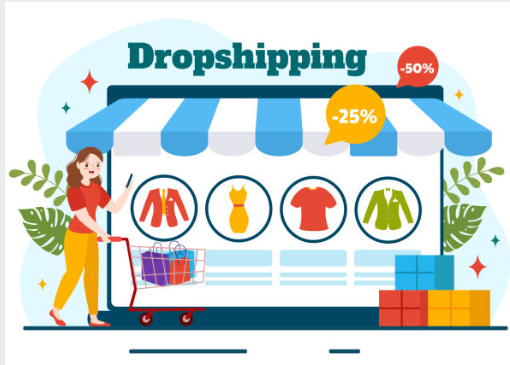Launch A Successful Dropshipping Business Today!

A Step-by-Step Guide to Launching Your Dropshipping Business.
Starting a dropshipping business can be an exciting and profitable venture. With low startup costs and the ability to run your business from anywhere, it’s no wonder so many entrepreneurs are diving into the world of dropshipping. This guide will walk you through the essential steps to get your dropshipping business off the ground and on the path to success.
1. Understand the Dropshipping Model
Before you start, it’s crucial to understand what dropshipping is and how it works. In a dropshipping model, you don’t keep any products in stock. Instead, you partner with suppliers who handle inventory and shipping. When a customer places an order on your online store, you purchase the item from your supplier, who then ships it directly to the customer. This means you don’t have to worry about inventory management or shipping logistics.
2. Choose a Niche
Selecting a niche is one of the most important decisions you’ll make. Your niche will determine your target audience, marketing strategies, and product selection. To choose a profitable niche, consider the following:
- Passion and Interest: Choose a niche you’re passionate about. This will keep you motivated and engaged.
- Market Demand: Use tools like Google Trends and keyword research to identify high-demand niches.
- Competition: Analyze your competition. A profitable niche will have some competition, but it shouldn’t be saturated.
- Profit Margins: Ensure the products in your niche have healthy profit margins.
3. Conduct Market Research
Once you’ve chosen a niche, conduct thorough market research. Identify your target audience, their preferences, and purchasing behavior. Look for gaps in the market that your business can fill. Analyze your competitors to understand their strengths and weaknesses. This information will help you refine your business strategy and create a unique selling proposition (USP).
4. Find Reliable Suppliers
Your suppliers are the backbone of your dropshipping business. Partnering with reliable suppliers ensures product quality, timely shipping, and customer satisfaction. Use platforms like AliExpress, Oberlo, and SaleHoo to find reputable suppliers. When evaluating suppliers, consider:
- Product Quality: Order samples to check the quality of products.
- Shipping Times: Choose suppliers with reasonable shipping times.
- Communication: Ensure the supplier is responsive and communicative.
- Reviews and Ratings: Check reviews and ratings from other dropshippers.
5. Set Up Your Online Store
Creating an appealing and user-friendly online store is crucial for attracting and retaining customers. Use e-commerce platforms like Shopify, WooCommerce, or BigCommerce to set up your store. Here’s what you’ll need:
- Domain Name: Choose a memorable and relevant domain name.
- Website Design: Use a clean and professional design that reflects your brand.
- Product Listings: Create detailed and attractive product listings with high-quality images and descriptions.
- Payment Gateway: Set up secure payment gateways like PayPal, Stripe, or Shopify Payments.
6. Develop a Marketing Strategy
A strong marketing strategy is essential for driving traffic to your store and converting visitors into customers. Consider the following marketing channels:
- Social Media: Use platforms like Facebook, Instagram, and Pinterest to promote your products and engage with your audience.
- Content Marketing: Create valuable content, such as blog posts and videos, to attract and educate potential customers.
- Email Marketing: Build an email list and send newsletters, promotions, and updates to your subscribers.
- Influencer Marketing: Partner with influencers in your niche to reach a wider audience.
- Paid Advertising: Use Google Ads and social media ads to drive targeted traffic to your store.
7. Optimize for Conversions
Once you start driving traffic to your store, focus on optimizing your website for conversions. Implement strategies to improve user experience and encourage purchases, such as:
- Clear Call-to-Actions (CTAs): Use prominent and compelling CTAs to guide visitors towards making a purchase.
- Trust Signals: Display customer reviews, ratings, and trust badges to build credibility.
- Simplified Checkout Process: Ensure your checkout process is quick and straightforward.
- Retargeting Campaigns: Use retargeting ads to bring back visitors who didn’t make a purchase.
8. Monitor and Improve
Your dropshipping business will require ongoing monitoring and improvement. Use analytics tools to track your website traffic, sales, and customer behavior. Identify areas for improvement and test different strategies to optimize your business. Stay updated with industry trends and adapt your business accordingly.
Conclusion
Starting a dropshipping business is a rewarding journey that offers flexibility and the potential for significant profits. By following these steps and staying committed to your goals, you can build a successful dropshipping business and achieve entrepreneurial success. Remember, persistence and continuous learning are key to thriving in the competitive world of dropshipping. Happy selling!




